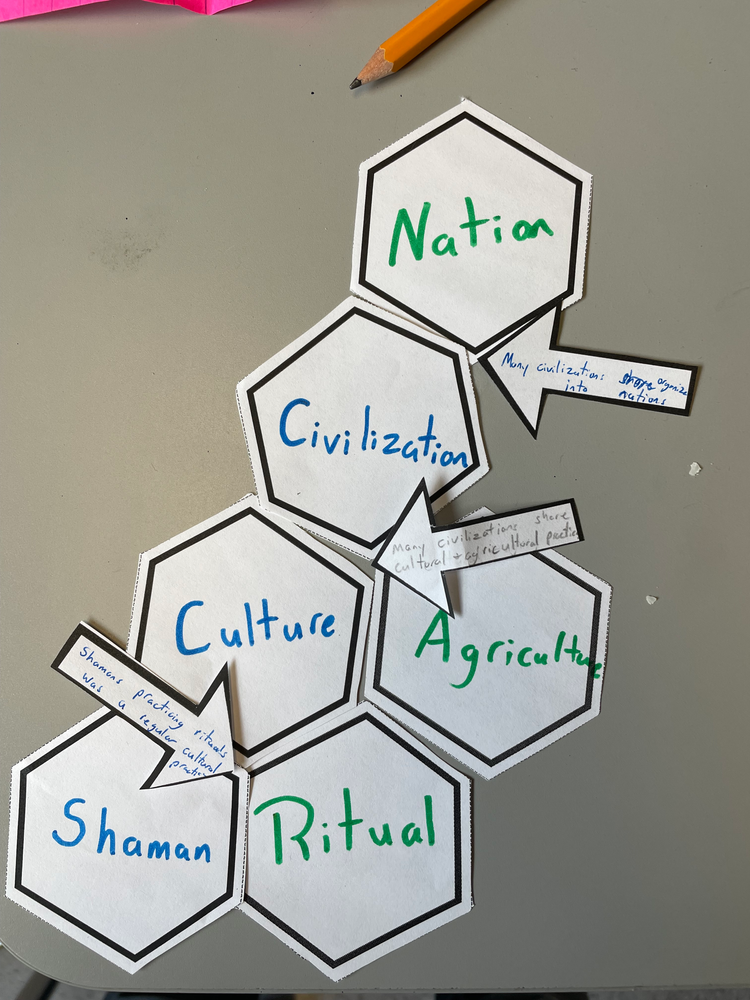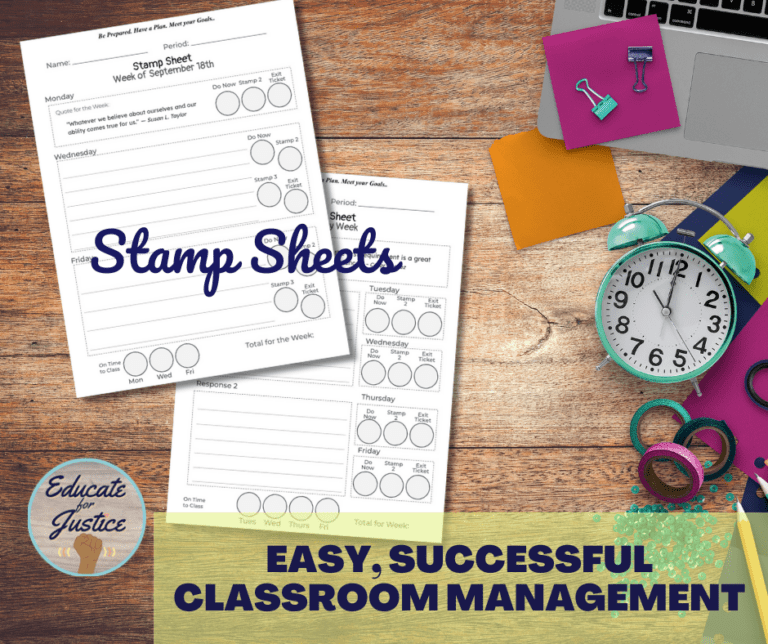Vocabulary instruction is so critical for our students as a tool for equitable learning and opportunity for their futures. Student comprehension of texts and ability to converse with confidence in academic settings depends on a deep understanding of vocabulary across tiers. Yet offering a list to memorize is neither helpful nor successful for many of our students’ long-term growth. Instead, it is critical that we make time for active engagement with vocabulary in the classroom. As a bonus, once students are familiar with vocabulary routines, prep and planning become minimal for that part of the week and research has shown they are more likely to retain the knowledge when using known routines. So what does that look like in a classroom?
Start with relevant words
Teaching words that don’t have anything to do with other context of your classroom is unlikely to engage students or support their success. Vocabulary options are rich in our daily instruction- there is the academic vocabulary we are using each day as well as content vocabulary across subjects. If you are not teaching all subjects to students, it is still more useful to collaborate with colleagues for words related to what they are teaching rather than selecting a generic word list. Words that will be present in a class read-aloud are also beautifully relevant.
Make sure to make time to go over what the words mean rather than just definitions. Giving students time to look up words in a dictionary teaches academic skills and agency, but there still needs to be time to make sure the meanings being identified are applicable. When I’m teaching students about Geography vocabulary, I need them to understand a very different meaning for the word mouth. When we are in our argument unit, students need to understand that position is not a physical thing in this context. Some teachers do a few words a day, others go through many at once, you know what works best for the pacing of your classroom, but it is important that space is made.
Explicit Vocabulary Instruction
Vocabulary Logs
Students should keep track of their vocabulary as a means to direct their brain to learn, to return to when they need help to recall a word, and to be able to track their own progress. Have you ever pulled a child aside to compare their work in April to their work in August? The look on their faces when you affirm how much they have grown is what we teach for. Vocabulary logs should be not just a list of words and repeated definitions, they should include the word, the definition in the student’s own words, and an example or illustration to make meaning. This is also a routine that is highly beneficial for students to be in for future grades and their careers.
Semantic Webs or Frayer Charts
Depending on the type of words you are working with, one or the other of these will be better for students. I break the vocabulary words up so that each word has a student or pair of students (no more than three) making the chart. Then they present to the rest of the class. Students take educating their peers seriously and doing this whole class often gives me the chance to correct misunderstandings that come up about words.
Word Walls
In the same way that students can refer to their individual new words in a vocabulary log, word walls make collective learning visible. Students benefit from having newer words in front of them even when they are older and we’ve stopped worrying about providing a “print rich environment.” Additionally, students are much more likely to use the new words in writing and discussion when they are readily available. Finally, when you want to prompt students to use stronger words, it is much faster to point to the wall than wait for them to pull out their vocabulary notebooks.
Practice use in context
Just as students should write their own example or illustration in their vocabulary logs, practice should be in context, not just memorizing definitions from flashcards. Many of my students love being given time to write a silly story with their vocabulary words and can’t wait to share them. Other students prefer to write a sentence for each word; either routine works great. Giving students the opportunity to make fill in the blank sentences for each other also keeps things interesting while allowing students to learn collaboratively and carry more of the cognitive load on their way to being independent learners.
Use games and activities
Making vocabulary fun also makes it sticky. Pick two to three activities that you will use repeatedly through the year to practice vocabulary. Students won’t learn as well if they are focussed on learning new routines rather than just focussing on the review. Three of my favorites are Bingo, Hexagonal Thinking and Charades. Students love Bingo most, and then charades, but I love the way their creative thinking grows with Hexagonal Thinking
For Bingo, I keep it easy for myself- everyone gets a blank Bingo card and fills in the squares with vocabulary words (I generally allow the use of the current and most recent unit, or you could just let kids use each word twice, you can also play with a 3 by 3 or 4 by 4 grid for a faster game). I have all of the words on cards and when I pull one, someone has to use it in context- if they use it right, everyone who had that word down crosses it out.
For Charades, hopefully you are familiar with the game, I recommend using mini-whiteboards for everyone to write their answers on by a certain time or playing in teams to ensure more people are involved.
I can’t take credit for Hexagonal Thinking– that goes to Cult of Pedagogy and I will defer to their explanation. To make it work for me, I did cut out and laminate lots of hexagons. It was tedious, but now I just give kids a set of hexagons and an expo marker and they are ready to go. Having them cut their own hexagons is also a great option if your kids are a little more efficient with cutting.

Vocabulary unlocks more than test scores, it helps our students comprehend and communicate at higher levels. Hopefully these tips smooth your path to taking them there.





